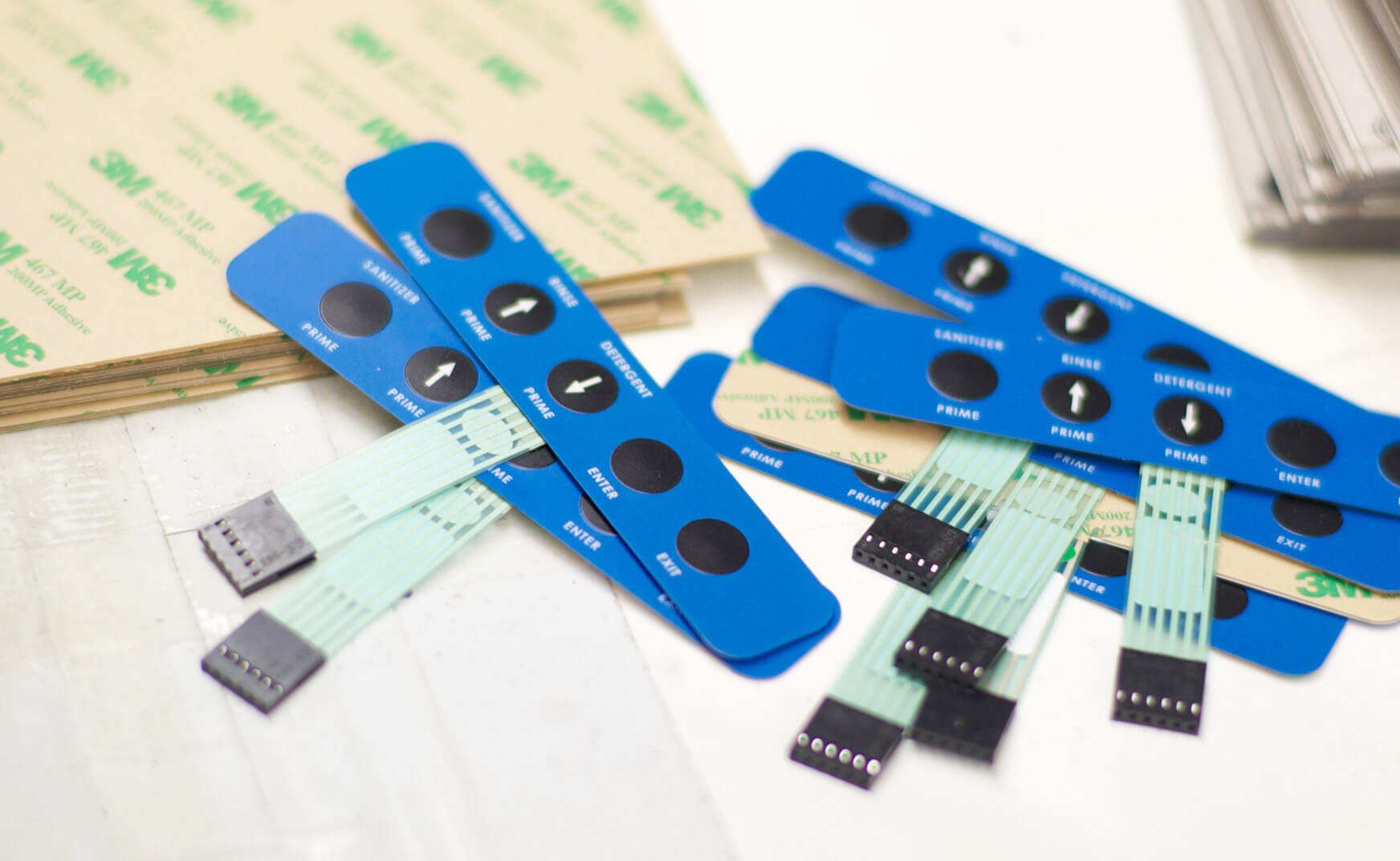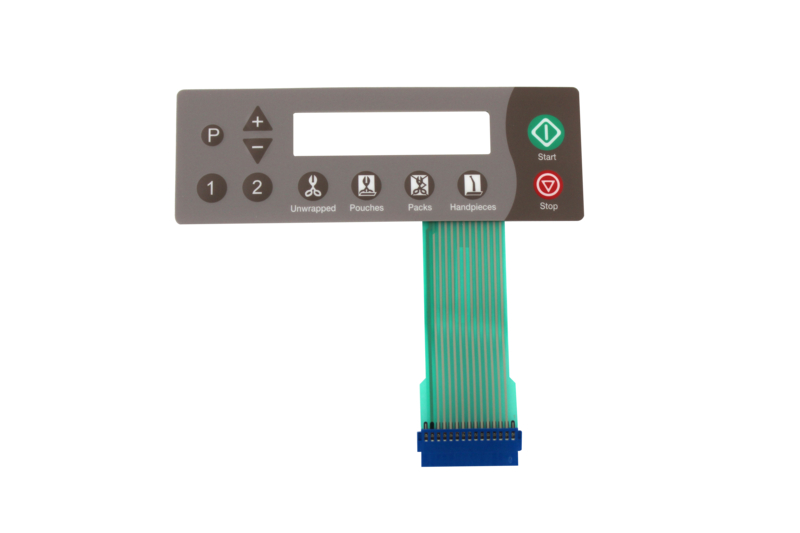Don’t ignore the value of working with a trustworthy membrane switch manufacturer for mock-ups.
Don’t ignore the value of working with a trustworthy membrane switch manufacturer for mock-ups.
Blog Article
All Regarding Membrane Switch Over: Recognizing Its Style and Functionality
When you think of the control interfaces in modern tools, membrane layer switches usually come to mind. These components are a lot more than simply buttons; they blend design and functionality flawlessly. Comprehending just how they function and what makes them effective can alter your perspective on daily electronics. There are nuances to their layout and efficiency that you may not be aware of. Allow's explore what sets membrane switches over in addition to other control systems.
What Are Membrane Layer Switches?

Membrane layer switches can also be customized relating to shape, dimension, and graphics, enabling producers to create one-of-a-kind user interfaces tailored to details items. In general, membrane buttons play a considerable role in enhancing customer experience throughout a large range of applications.
How Membrane Switches Over Work
When you push a secret on a membrane switch, it triggers a straightforward yet reliable system. The top layer, frequently constructed from versatile product, pushes down onto a conductive layer beneath it. This activity bridges the gap in between conductive traces, completing an electric circuit. As soon as the circuit closes, it sends a signal to the device's controller, which translates your input.
You'll observe that the tactile comments differs based upon the switch design, providing either a soft click or an extra noticable feedback. As soon as you release the secret, the membrane go back to its initial position, reopening the circuit and stopping the signal. This procedure takes place almost instantly, ensuring a receptive user experience.
Membrane switches are prominent as a result of their sturdiness and resistance to dirt and wetness, making them ideal for various applications, from house appliances to medical tools. Recognizing this procedure helps you appreciate their widespread usage.
Trick Elements of Membrane Layer Buttons
Comprehending the key parts of membrane layer buttons is essential for grasping their performance and layout. The protective layer shields versus ecological factors and put on, prolonging the button's life expectancy. By comprehending these elements, you'll get understanding into just how membrane switches over run and their value in various applications.
Products Utilized in Membrane Layer Switch Style
The efficiency and toughness of membrane changes greatly depend upon the products used in their design. You commonly encounter polyester and polycarbonate as primary substrates due to their exceptional stamina and versatility. These materials withstand scratches and chemicals, making them excellent for demanding atmospheres.
The conductive layers commonly use silver or carbon, chosen for their integrity and conductivity. membrane switch manufacturer. Silver offers remarkable performance, while carbon is a cost-efficient choice. For the overlay, you might consider a matte or glossy finish, depending on your visual needs and individual experience
Adhesives play an essential function too; they bond layers firmly and assure durability. Make specific to choose adhesives that withstand environmental aspects like temperature level and humidity. Lastly, do not neglect the value of a great printing method for graphics, as it boosts both capability and visual charm. Selecting the appropriate materials will certainly assure your membrane button stands the examination of time.
Layout Considerations for Membrane Switches
While creating membrane layer switches, it's crucial to take into account various elements that affect their performance and customer experience. Start by concentrating on the layout and button size; make certain they're intuitive and very easy to navigate.
Do not neglect the visuals style; clear labeling and color comparison are substantial for visibility. Confirm your layout accommodates ecological elements, like dampness or temperature level variants, which can impact efficiency. Keep in mind the significance of testing prototypes with actual customers to collect responses and make essential modifications. This repetitive process aids you fine-tune the design, confirming it satisfies both practical and aesthetic demands properly. By thoroughly taking into consideration these components, you'll develop a membrane layer switch that boosts use and complete satisfaction.
Applications of Membrane Switches
Membrane layer switches are functional components discovered in different applications, from commercial devices to consumer electronic devices. You'll see their effect in devices that need durable user interfaces and in tools that take advantage of smooth designs. Recognizing these applications aids you value the capability and practicality of membrane layer buttons in everyday innovation.
Industrial Devices Usage
When you're looking to improve the functionality of commercial devices, membrane layer buttons use a trusted service that combines resilience with straightforward layout. These switches are best for severe atmospheres, providing resistance to dust, wetness, and chemicals. You'll discover them in control panels for making machines, HVAC systems, and medical tools, where precision and responsiveness are important. Their low profile indicates they fit flawlessly right into various devices, conserving important area while keeping ease of usage. With customizable graphics and backlighting Our site choices, you can produce an intuitive interface for drivers, boosting effectiveness and safety. Plus, their lengthy life-span lowers maintenance expenses, making them a smart financial investment for your commercial applications. Embrace membrane layer buttons to enhance your operations and enhance general performance.
Customer Electronic Devices Combination
In the domain of customer electronic devices, membrane layer switches play a vital function in boosting individual communication and device functionality. Membrane buttons also guarantee longevity and resistance to dust and wetness, expanding the lifespan of your electronics. By selecting membrane layer switches, you boost not just the capability however likewise the design of your devices, making daily communications smooth and enjoyable.
Advantages and Disadvantages of Membrane Layer Buttons
While membrane buttons offer a series of benefits, they likewise come with some downsides that you ought to consider. One substantial advantage is their small style, making them excellent go to my blog for space-constrained applications. They're additionally economical, supplying a long lasting solution with a reduced production price. Furthermore, their smooth surface area is simple to tidy, boosting health in settings like health centers.

Nonetheless, there are downsides. Membrane layer buttons can have a shorter lifespan contrasted to mechanical buttons, especially under heavy usage. They can also be much less tactile, which might affect individual responses throughout operation. Additionally, if harmed, repairing them can be difficult and frequently calls for complete replacement. Ultimately, their sensitivity to extreme temperature levels and environmental problems might limit their efficiency in specific setups. Balancing these pros and disadvantages will aid you determine if membrane layer switches are the appropriate suitable for your task.
Frequently Asked Inquiries
How Much Time Do Membrane Layer Switches Generally Last?
Membrane layer changes normally last in between 5 to 10 years, depending upon usage and ecological conditions. You'll desire to review aspects like wear, direct exposure to moisture, and temperature level variations to determine their durability effectively.
Can Membrane Switches Over Be Customized for Details Layouts?
Yes, you can customize membrane layer switches to fit details designs (membrane switch manufacturer). You'll have the flexibility to choose colors, shapes, and designs that match your project's requirements, guaranteeing they mix effortlessly with your total visual
What Is the Expense Range for Membrane Layer Switch Over Manufacturing?
The cost range for membrane button production typically drops in between $1 and $10 each, depending on factors like layout intricacy, quantity, and materials. You can obtain quotes from producers to discover the very best alternative.

Are Membrane Layer Changes Water Resistant or Resistant?
Membrane layer buttons can be made to be water-proof or immune, depending upon materials made use of and building and construction approaches. If you need them for wet atmospheres, guarantee you specify those demands during the design process.
Exactly How Do Membrane Switches Compare to Traditional Switches?
Membrane switches are usually thinner and extra flexible than traditional buttons, providing a streamlined design. They're usually less complicated from this source to clean and incorporate, yet may not supply the responsive feedback you're made use of to with mechanical alternatives.
Verdict

Report this page